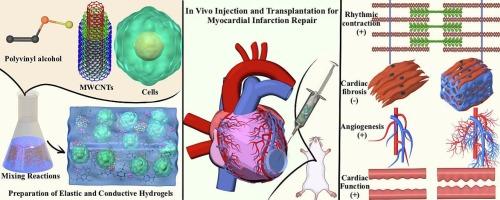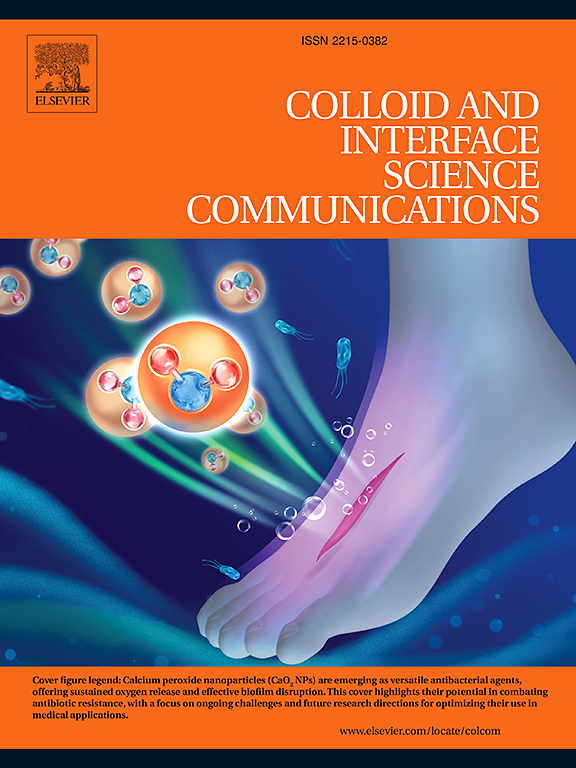Applications of elastic and conductive hydrogels in myocardial infarction repair
IF 4.7
3区 材料科学
Q2 CHEMISTRY, PHYSICAL
引用次数: 0
Abstract
Myocardial infarction (MI) is one of the leading causes of death worldwide, posing a serious threat to global human health. The heart failure that often follows MI remains a major contributor to mortality. Therefore, the development of more effective treatment approaches or intervention strategies aimed at improving patients' quality of life is of great clinical significance. The emergence and advancement of cardiac tissue engineering have opened new avenues and have demonstrated promising results in practical applications. Among various biomaterials, elastic and conductive hydrogels (ECHs) have attracted extensive attention due to their excellent biocompatibility, tunable elasticity, and the potential for electrical integration with human myocardium. By virtue of their unique properties, ECHs synergize with functional cells, bioactive molecules, and therapeutic agents to markedly improve outcomes in MI repair, effectively serving as a valuable adjunct to these therapies. Rooted in the practical needs of MI therapy, this review systematically discusses the design principles of ECHs, strategies for enhancing their mechanical and electrical properties, and their synergistic applications with therapeutic cells and bioactive molecules. It further outlines recent advances and persistent challenges, offering theoretical insights and strategic directions for future innovation and clinical translation.

弹性和导电水凝胶在心肌梗死修复中的应用
心肌梗死(MI)是世界范围内导致死亡的主要原因之一,对全球人类健康构成严重威胁。心肌梗死后的心力衰竭仍然是死亡率的主要原因。因此,开发更有效的治疗方法或干预策略以提高患者的生活质量具有重要的临床意义。心脏组织工程的出现和发展开辟了新的途径,并在实际应用中显示出良好的结果。在各种生物材料中,弹性和导电水凝胶(ECHs)因其优异的生物相容性、可调节的弹性以及与人体心肌电整合的潜力而受到广泛关注。由于其独特的特性,ECHs与功能细胞、生物活性分子和治疗剂协同作用,显著改善心肌梗死修复的结果,有效地作为这些治疗的有价值的辅助手段。基于心肌梗死治疗的实际需要,本文系统地讨论了ECHs的设计原则,增强其机械和电学性能的策略,以及它们与治疗细胞和生物活性分子的协同应用。它进一步概述了最近的进展和持续的挑战,为未来的创新和临床翻译提供了理论见解和战略方向。
本文章由计算机程序翻译,如有差异,请以英文原文为准。
求助全文
约1分钟内获得全文
求助全文
来源期刊

Colloid and Interface Science Communications
Materials Science-Materials Chemistry
CiteScore
9.40
自引率
6.70%
发文量
125
审稿时长
43 days
期刊介绍:
Colloid and Interface Science Communications provides a forum for the highest visibility and rapid publication of short initial reports on new fundamental concepts, research findings, and topical applications at the forefront of the increasingly interdisciplinary area of colloid and interface science.
 求助内容:
求助内容: 应助结果提醒方式:
应助结果提醒方式:


